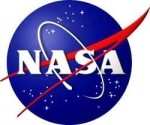Sun, Feb 06, 2011
Older Elementary Kids Get To Design Experiments To Fly In
Space
 Astronauts aboard the International Space Station this spring
will conduct six experiments designed by middle school students
from across the country. The winning proposals of the "Kids in
Micro-G" Challenge are from California, Idaho, Montana, New York,
Pennsylvania and Washington state.
Astronauts aboard the International Space Station this spring
will conduct six experiments designed by middle school students
from across the country. The winning proposals of the "Kids in
Micro-G" Challenge are from California, Idaho, Montana, New York,
Pennsylvania and Washington state.
In its second year, the program offers students in fifth through
eighth grades an opportunity to design experiments or simple
demonstrations for testing both in the classroom and in the
station's microgravity environment. A team of representatives from
NASA centers selected the winners from among 62 proposals. The
experiments will study the effect of weightlessness on various
subjects and show what the environment reveals about the laws of
physics.
"This is a wonderful opportunity for these students to learn how
scientists and astronauts work together to develop new technologies
for space exploration and to learn more about how things work on
Earth," said Mark Severance, International Space Station National
Laboratory Education projects manager at NASA's Johnson Space
Center in Houston. "By engaging students in interesting science
experiments, teachers can pique a child's interest while helping
develop higher-level thinking skills."
The winning experiments came from students at these schools:
- Chabad Hebrew Academy in San Diego, CA for "Attracting Water
Drops." This experiment will determine if a free-floating water
drop can be attracted to a static charged rubber exercise
tube.
- Neighborhood After School Science Association in Ava, NY, for
"Flight of Paper Rockets Launched by Air Cannon." This
experiment will determine the direction and distance traveled by a
paper air rocket launched in microgravity.
- Key Peninsula Middle School in Lakebay, WA, for "Pondering the
Pendulum." This experiment will examine the effects of microgravity
on a pendulum.
- Potlatch Elementary in Potlatch, ID, for "Pepper Oil Surprise."
This experiment will investigate the interaction of liquid
pepper/oil and water in a plastic bag in microgravity.
- Gate of Heaven School in Dallas, PA, for "Buoyancy in Space."
This experiment will determine if the buoyancy of an object is
affected in a microgravity environment.
- Will James Middle School in Billings, MT, for "A Comparison of
Dispersion of Liquid Pepper under Microgravity and Earth
Conditions." This experiment will compare the dispersal of liquid
pepper in microgravity to Earth's gravity.
The apparatus for the experiments was constructed using the same
materials as in a tool kit provided to astronauts on the space
station. The materials in the kit are commonly found in the
classroom and used for science demonstrations. The experiments will
take no more than 30 minutes to set up, run and take down.
More News
Terminal Radar Service Area Airspace surrounding designated airports wherein ATC provides radar vectoring, sequencing, and separation on a full-time basis for all IFR and participa>[...]
Very High Frequency (VHF) The frequency band between 30 and 300 MHz. Portions of this band, 108 to 118 MHz, are used for certain NAVAIDs; 118 to 136 MHz are used for civil air/grou>[...]
“From approximately November 2021 through January 2022, Britton-Harr, acting on behalf of AeroVanti, entered into lease-purchase agreements for five Piaggio-manufactured airc>[...]
Also: Virtual FLRAA Prototype, IFR-Capable Autonomous A/C, NS-32 Crew, Golden Dome Missile Defense Bombardier announced that the first production Global 8000 successfully completed>[...]
Aero Linx: The 1-26 Association (Schweizer) The Association’s goal is to foster the helpfulness, the camaraderie, and the opportunity for head-to-head competition that is fou>[...]
 ANN's Daily Aero-Term (05.29.25): Terminal Radar Service Area
ANN's Daily Aero-Term (05.29.25): Terminal Radar Service Area ANN's Daily Aero-Term (05.30.25): Very High Frequency (VHF)
ANN's Daily Aero-Term (05.30.25): Very High Frequency (VHF) Aero-News: Quote of the Day (05.30.25)
Aero-News: Quote of the Day (05.30.25) Airborne 05.23.25: Global 8000, Qatar B747 Accepted, Aviation Merit Badge
Airborne 05.23.25: Global 8000, Qatar B747 Accepted, Aviation Merit Badge ANN's Daily Aero-Linx (05.30.25)
ANN's Daily Aero-Linx (05.30.25)



